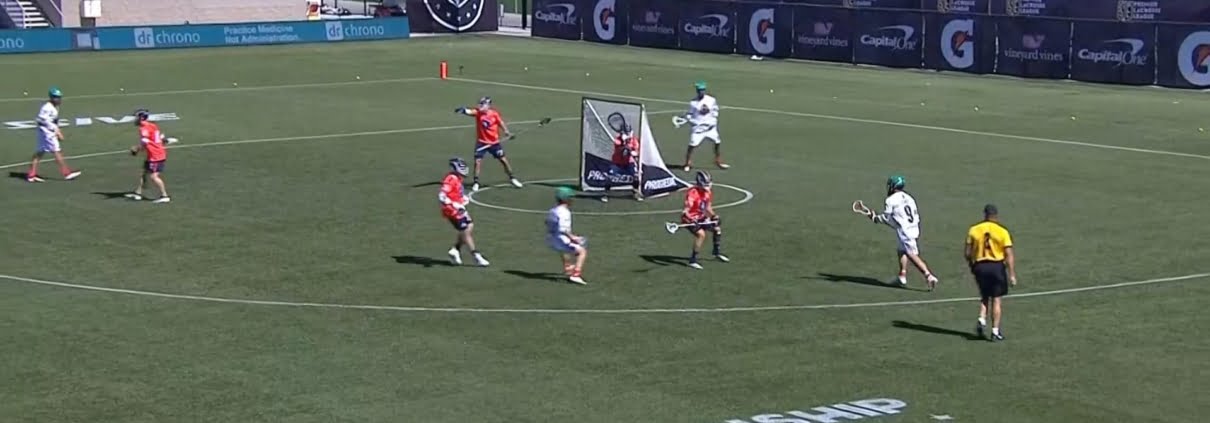PLL Pass Down, Pick Down in Transition
Use this simple play we got from the PLL this summer to create tons of extra Transition and Substitution scoring opportunities when your team first gets the ball on Offense!
PASS DOWN, PICK DOWN: BOX, NCAA, MLL, PLL
Pass Down, Pick Down is a standard Box Lacrosse Offense that we see everywhere now. We saw it a ton during the PLL this summer, especially from the two-time defending champion Whipsnakes.
They ran this play on both sides of the field when they got the ball on Offense, especially on the left side with 2020 league scoring leader Matt Rambo (7g, 18a). This play especially helped Rambo rack up a PLL-record 10-point game (2g, 8a) against the Archers, clinching the No. 1 seed going into the elimination round, on the way to their second PLL Championship.
"TRANSITION" AND "SUBSTITUTION" DEFINED:
"Transition" is any time one team gets possession and is Clearing, or moving the ball from the defensive to offensive end of the field. This is when you will see most or all of your 4-on-3 Fast Breaks, 5-on-4 Slow Breaks, etc., as players from both teams get down the field at different speeds, timing and spacing.
"Substitution" is similar to Transition, as players get off and on the field, either from the Substitution Box or through the Midfield Line. Depending when, where, and how quickly old players get off and new players get on, Substitution Game can create lots of extra scoring opportunities on its own!
We estimate that 30-40% of the goals from the entire PLL season this summer were from Numbers-AdvantageTransition situation or Substitution goals. Depending on the level of your players, you are probably spending lots more game time in some kind of unsettled situation than you are playing settled 6-on-6 Settled Offense Plays and Progressions. Make sure you focus on both!
EARLY OFFENSE: 3-on-3, 4-on-4 SITUATIONS
The Pass Down, Pick Down worked so well for the Whipsnakes whenever they first got the ball because it reduced the number of players while both teams were subbing their Middies. Fewer players on the field increases the amount of Space each Offensive player has to work with, while it forces fewer Defenders to cover more ground, and Slide farther and longer to help stop the ball. Plus it reduces the complexity of the numbers-advantage situations involved. Playing 3-on-3 or 4-on-4 is easier than playing 6-on-6, even at the Pro level.
HERE'S THE PLAY:
Any good team, especially at the college or professional level, will be able to get at least one Middie back on Defense any time there's a turnover, so there are usually very few pure, clean 4-on-3 Fast Breaks. Most transition situations will be some kind of a 4-on-4 or 5-on-4.
Figure 1.) Get the ball to the Attack, into a Safe Stick! Here, Attackman Blue 3 is usually where Rambo plays on the left wing. Blue 4 bringing the ball down field is most likely a Defensive Midfielder (SSDM) or Long Pole Defender. Either way, not really a ball handler. Get the ball deep, to an Attackman, where a turnover becomes less likely.



